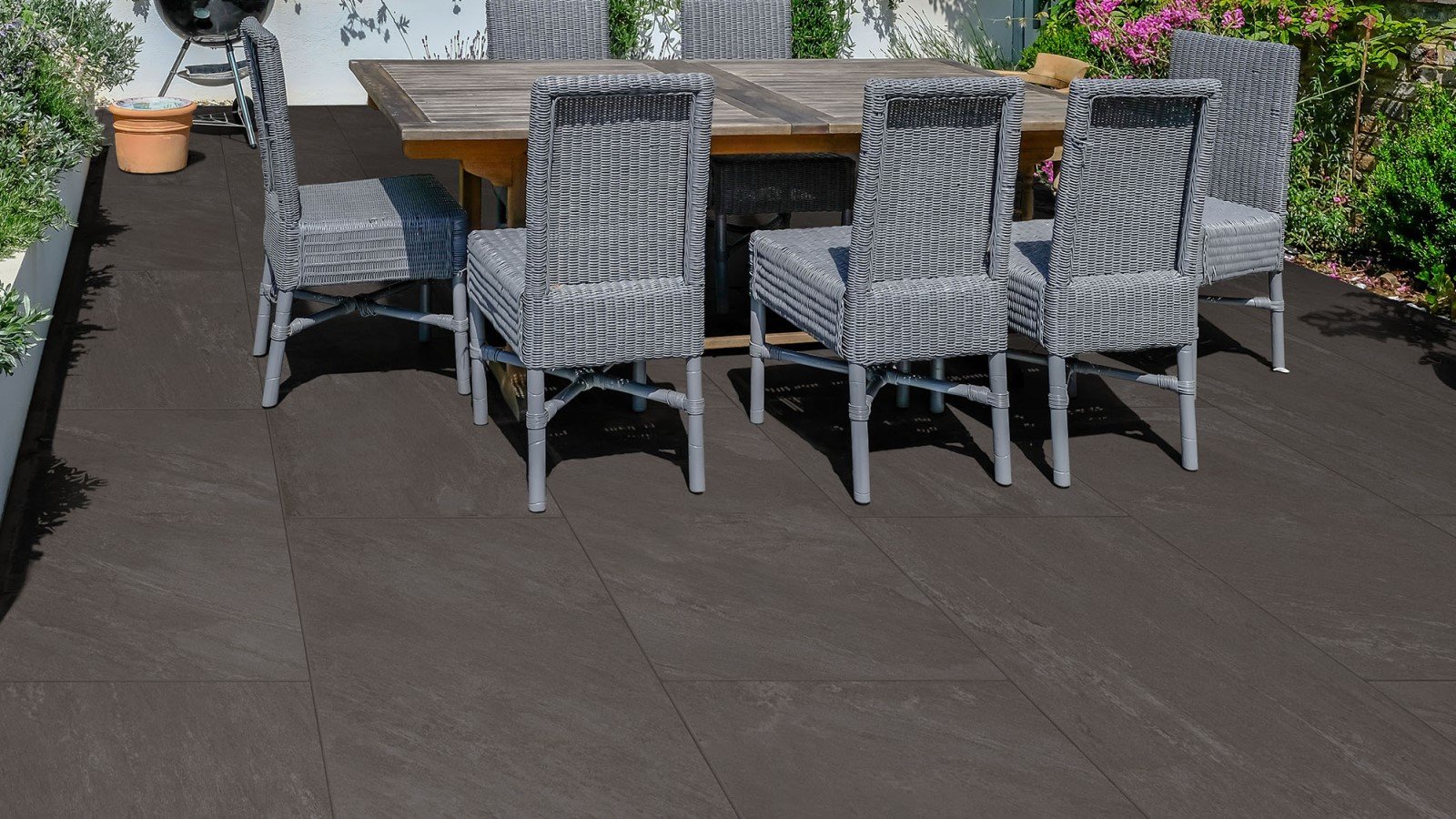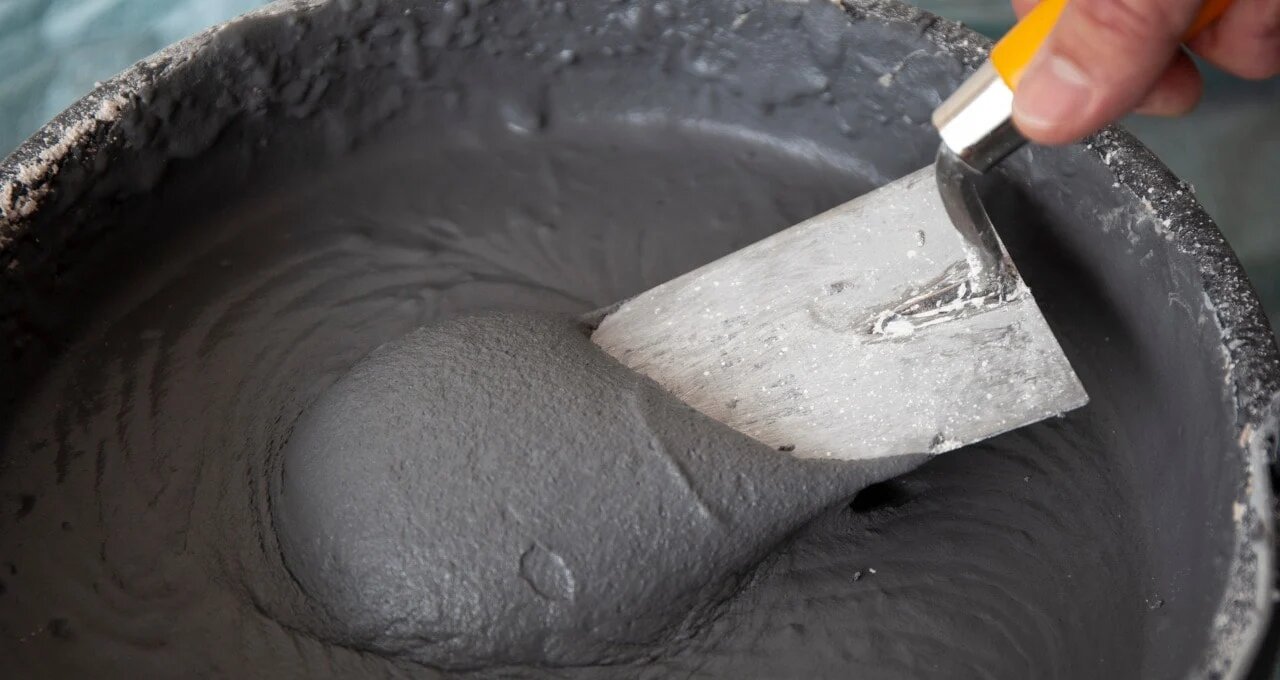How to Lay Porcelain Paving
Want to give your garden the wow-factor? If you’re keen to impress nosy neighbours just as much as visiting guests, a practical and attractive porcelain paving patio could be just what you need.
Not only do these luxurious pavers look the part, they are also extremely hard-wearing, resistant to stains, frost and moss. But (yes, unfortunately these benefits do come with a ‘but’) be prepared; porcelain slabs can be trickier to lay than other paving slabs.
And that’s where we come in. Build your dream porcelain patio that will last for the long-term when you read our helpful guide on how to lay porcelain paving, below.
Preparing your base
First of all, you need to lay the groundwork to ensure that your porcelain paving slabs will be held securely for years to come.
Thankfully, this process is very much the same as any other paving prep – just follow the site preparation and first three laying steps from our guide on how to lay paving slabs.
But you’ll have to change tactic when mixing mortar. Laying porcelain paving requires more cement than other pavers (it’s necessary to build a stronger bond between paving slab and earth). As such, you’ll need to mix your mortar using 4 parts sharp sand to 1 part cement.
Finally, to ensure your patio will effectively carry away surface water, you want to install your pavers at a fall (slope gradient) of 1:80. For more information about patio drainage, make sure you take a look at our in-depth guide .
Priming your porcelain paving slabs
With your base good to go and your paving slabs at the ready, it’s time to ease them into place, right? Not just yet.
Unlike other paving slabs, porcelain pavers need a little extra special treatment before taking their final position. That’s because porcelain is non-porous, meaning it doesn’t stick to the mortar base as easily as other pavers.
Don’t worry though; the solution is simple. All you need to do is paint the reverse side of your slabs with a slurry primer. This creates a strong bonding bridge that maintains the structural integrity of your patio for the long-term.
TOP TIP: While a non-porous material might need a little more effort to lay, the long-term benefits are more than worth it. That’s because, as they don’t allow any liquid to pass through, these type of pavers are more resistant to frost and less likely to crack.
TOP TIP: Be careful not to get any primer/cement mix on the face of your porcelain pavers. That’s because once it dries, primer/cement mix cannot be removed, leaving you with permanent, unsightly marks on your paving.
Laying your slabs
With your porcelain pavers primed and ready, you can finally begin to build out your patio. To make sure you don’t put a foot wrong, take a look at our simple step-by-step guide, below.
What you need to lay porcelain slabs
- Freshly-mixed mortar
- Porcelain pavers
- Mallet
- Measuring tape
- Spirit level
- Jointing compound
- Hard-bristled brush
- Tarpaulin (optional)
How to lay porcelain paving
- Start by laying the porcelain paving onto a fresh bed of mortar. We recommend that you lay the slab into position, one corner at a time – this ensures an accurate placement. TOP TIP: Rather than laying a bed of mortar for all your pavers at once, work one paving slab at a time. That way, the mortar won’t dry before you actually get the chance to install your pavers.
- Then, secure your paver placement by gently tamping the slab with a mallet. (Porcelain pavers are strong and durable but it’s always best to err on the side of caution.) For the best results, 100% of the paver should be in contact with the mortar bed – this ensures a stronger bond, which leads to a longer lifespan.
- With the paver in place, you will want to move quickly to make any adjustments to its positioning; once the mortar is dry, it’s near impossible to make any amends to placement. Check with your spirit level to ensure the paver is flat before moving onto the next slab. TOP TIP: If the thought of handling heavy pavers makes your muscles ache, our Bradstone porcelain pavers offer a more lightweight alternative.
- Regardless of the paving pattern you desire, when you lay down your next set of slabs, ensure there is approx. 5mm between each paver. If you need to cut any porcelain pavers down to size, check out our cutting paving slabs guide.
- Fill the 5mm gaps with the jointing compound. Then, once all the paving recesses have been filled, brush away any excess.
- Leave to dry for at least 24 hours (cover with tarpaulin, if wet weather is forecasted) and you’re done!
Now you understand the ins and outs of laying porcelain paving, it’s time to find the pretty pavers that will give your garden the wow-factor. Browse the full Simply Paving collection, or for more information on how to lay porcelain paving give us a call on 0800 032 6306 or start a live chat.





















































